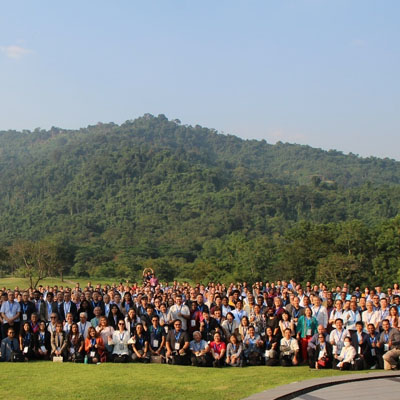Rise of Asia
Economic Growth and Social Problems in Asia
Asia is the largest continent in the world. Among the total world population of eight billion people now, 60 percent live in Asia, and 92 percent of the Asian population is in South, East, and Southeast Asia. These proportions may not be properly perceived by most people who live in Asia or elsewhere, whether they are leaders or laypeople, and whether they have engaged in Christian missions or not. The lack of comprehension of these simple facts and their enormous social significance may have multiple reasons. Although these reasons cannot be fully covered in this article, we simply invite our readers to take a close look at Asia with a fresh perspective.
Economic Growth
The rise of Asian economies has received much attention. Japan was the first industrialized Asian country. After more than a century of economic development, Japan’s nominal GDP (gross domestic product) has remained the third largest in the world, larger than that of Germany, the United Kingdom, or France. Since the 1980s, China has grown into the second largest economy and may overtake the United States as the largest in the next decade or so. In the second half of the twentieth century, the Four Asian Tigers (or Four Little Dragons)—Hong Kong, Singapore, South Korea, and Taiwan—maintained high levels of economic growth and joined the ranks of the world’s wealthiest societies.
Following the models of Asian Tigers, the Tiger Cub Economies of Indonesia, Malaysia, the Philippines, Thailand, and Vietnam have maintained steady growth in recent decades. India’s economy has grown into a powerhouse. If economic growth continues in the coming decades, Asia may produce half of the global GDP by 2040. By 2050, the world’s five largest economies are projected to be China, the US, India, Indonesia, and Germany.
However, there are some uncertainties of continual economic growth in Asia due to domestic politics and international relations. In fact, Central Asia is bogged down in domestic conflicts, and West Asia has been entangled in wars for decades. Moreover, the economic development is uneven, and economic disparity has remained a common social phenomenon.
The economic growth has led to a series of dramatic social changes. The most visible change is urbanization. East Asia and the Pacific is the world’s most rapidly urbanizing region, with more than 50 percent of the population living in urban areas now.
East Asia and the Pacific is the world’s most rapidly urbanizing region.
By 2050, 68 percent of the world population may live in urban areas, and most of the increase is going to take place in Asia. The number of cities has increased, the size of the cities has grown, and some metropolises have expanded into megalopolises and conurbations that connect multiple cities and towns. Seven of the largest metropolises in the world are in Asia: Tokyo, Delhi, Shanghai, Beijing, Osaka, Mumbai, and Dhaka; and each has more than 20 million residents. Traditional ways of life in preindustrial communities can no longer continue as usual, and each year millions of new urban residents must learn to traverse in the new urban setting and live amid diverse cultures. Hundreds of millions remain in rural areas, and their lifestyle is also changing along with economic development. In the meantime, in most of the urban areas and underdeveloped rural regions, there are significant numbers of people living in poverty.
The second obvious change along with economic growth and urbanization is the rapid increase of the new middle class. In 2020, about two billion Asians could be considered members of the middle class based on their levels of income. By 2030, the number could rise to 3.5 billion, accounting for two-thirds of the middle class in the world. In comparison, middle class membership in the Americas based on the same levels of income is expected to reach only 689 million by 2030. The new Asian middle class presents enormous consumer markets, thus shaping corporate strategies and driving international relations of both the developed and the developing countries. The members of this middle class are expected to adopt appetites for new technologies and more inclusive attitudes toward diverse cultures and lifestyles.
At the higher end of the wealth spectrum are the millionaires and billionaires (in US dollars). Asia leads in growth in these categories of rich and super rich people. Since around 2010, there have been more millionaires in the Asia-Pacific region than North America or Europe.1
The number of millionaires in Asia is projected to double from 30 million households now to 76 million by 2030. In Singapore, 13.4 percent of the population is projected to become millionaires, whereas China and India will have the highest numbers of millionaires in absolute terms. Meanwhile, ‘Asia has over 950 billionaires, outnumbering all other regions’.2 In between the billionaires and millionaires are the centimillionaires, who are primarily made up of tech titans, financiers, global CEOs, and heirs of the super rich. According to a report, the US has the largest number of centimillionaires (9,730), China the second (2,021), India the third (1,132), followed by the UK (968), Germany (966), Switzerland (808), Japan (765), Canada (541), Australia (463), and Russia (435).3 The centimillionaires are more likely to establish residency in multiple countries, since multinational living is key to their wealth management strategies. They are important movers and shakers of national, regional, and global economic development, political change, and international relations.
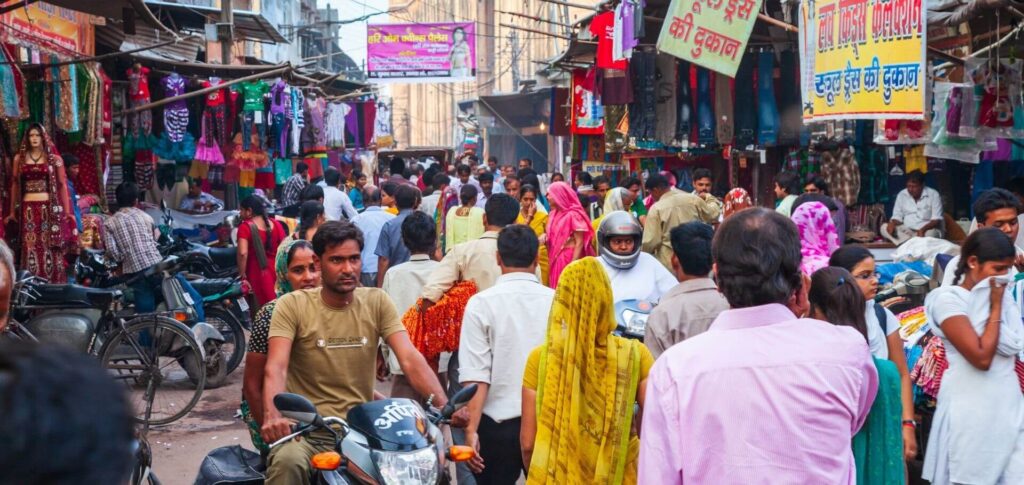
Demographic Developments
Along with uneven economic development and rapid urbanization, Asian populations are on the move. Large numbers of people have been migrating both within the country and across national borders. According to China’s census of 2020, there was a floating population of 376 million —migrant workers who move around to find jobs. An estimated 24 million international migrant workers were hosted in the Asian-Pacific region. There were about seven million students undertaking their education outside of their home countries. In the United States, 70 percent of international students are from Asia. There were also 5.5 million refugees and asylum seekers from Asia who were forcibly displaced due to conflicts and wars such as the ones in Afghanistan and Myanmar.4 Asian diasporas in Americas, Europe, and Africa have become significant presence in many countries, and they play important roles in local societies by linking their countries of residence with those of their origin.
Together with the rising prosperity, there has been a rapid decline of mortality rates and fertility rates, which has led to ageing societies. In 2020, nine of the top 10 countries with the highest number of people over the age 65 were in Asia: China (172 million), India (91 million), Japan (35 million), Russia (23 million), Indonesia (17 million), Pakistan (10 million), Thailand (9 million), Bangladesh (8 million), and South Korea (8 million). By 2050, one in four people in Asia, or about 1.3 billion people, will be over the age of 60.
Together with the rising prosperity, there has been rapid decline of mortality rates and fertility rates, which lead to aging societies.
Birth rates have declined sharply in Asia. While a total fertility rate below the replacement level of 2.1 is now the norm for advanced economies, the lowest rates are found in East Asia, with only 1.2 births per woman. The world’s lowest fertility rate is in South Korea, hovering around 0.7 to 0.9. Singapore, Hong Kong, Taiwan, and Japan follow closely, with China’s rate at 1.3 in 2020. Indeed, about three in 10 women in Japan, Hong Kong, and Singapore are permanently childless. Many demographers and economists of labour markets have expressed concerns about the pending population crises in East Asia. The changing population structures will have important consequences for community life and social stability.
Religious Pluralism
Asia is home to multiple axial-age civilizations. Abrahamic religions of Judaism, Christianity, and Islam originated in West Asia, Hinduism and Buddhism originated in South Asia, Confucianism and Daoism originated in East Asia, and there are also Shamanism and folk religions widely spread throughout Asian societies. Economic growth in Asia has given boosts to traditional cultures, including traditional religions. Meanwhile, atheism has been the official ideology in China, Vietnam, and North Korea. Asian products of films, cuisines, and practices of yoga, tai chi, and taekwondo have become popular in the West. Moreover, Buddhism, especially the various traditions that were formed or metamorphosed in East Asia, has found increasing reception in Europe and North America. Karma and reincarnation have entered the cultural conscience of many people in the West. On the other hand, Christianity has been growing in most Asian societies and diasporic communities around the globe.
In recent years and the near future, both the economic growth and social problems in Asia have been and will be more conspicuous in the People’s Republic of China (mainland China). Besides the population crises described above, the rise of Asia has also come with increased risks of wars. After decades of peace in the post–World War II international order, the rising nationalism in the growing economies may lead to geopolitical rivalries, nuclear threats, and wars in some areas of South, East, and Southeast Asia.
Christian Missions in East Asia
The world has dramatically changed and is still changing in all areas of human civilization. Asia has also significantly changed in the last 50 years regarding political conflicts, socioeconomic development, educational and scientific advancement, and the resurgence of Asian living religions. Since the end of World War II, some countries in Asia have experienced rapid church growth, while there has been a decline in other nations.
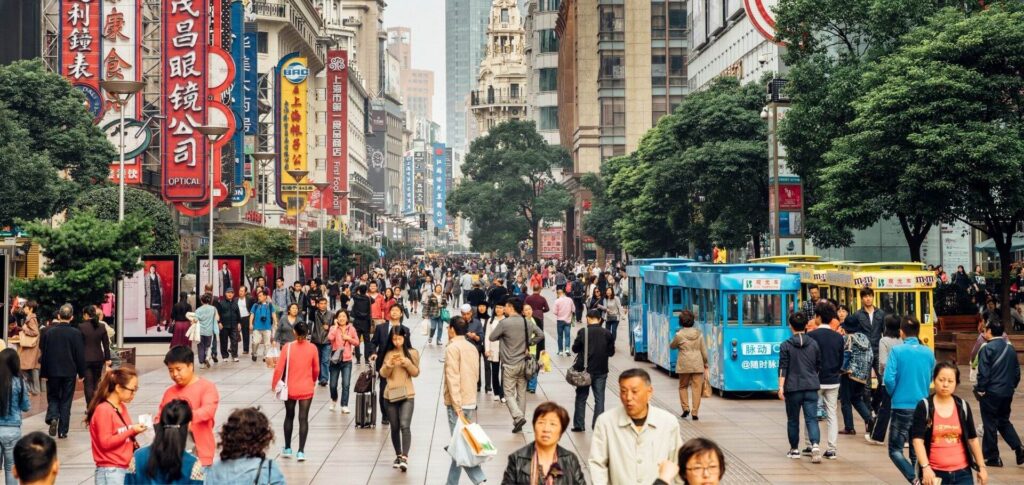
Rapid Church Growth
It is exciting to observe the rapid church growth in several Asian nations.
Korean Church
Korea, which had been one of the poorest nations in the world during the Korean War (1950–1953) with a GNP (gross national product) of USD 67 in 1953, became one of the ten wealthiest nations in the world with a GNP of USD 34,189 in 2022. Before the first two American Protestant missionaries (Horace Underwood and Henry G. Appenzeller) arrived in Incheon Harbour on Easter Sunday in 1885, Koreans followed Buddhism, Confucianism, and Shamanism. However, the Korean church’s Total Evangelization Movement in the 1970s produced rapid church growth, evident from the so-called description ‘Six New Churches Every Day’. In 2017, there were 10 million Protestants with 60,000 churches and 5.8 million Roman Catholics who comprise 11 percent of the 50-million total population in Korea.5
Philippine Church
Spain colonized the Philippines for 333 years (1565–1898). The Catholic population was over 81 percent of 110 million people in 2022. America colonized the country from 1898 until the Japanese invasion in 1942. The Philippines is the most Christianized nation in Asia. Filipino Protestants represent about 11–12 percent of the population. With a low GNP of USD 3,460 (2021), there were 10 million Filipinos in diaspora, including one million in the Middle East.
Singaporean Church
The island nation with 5.7 million population had a 19 percent Christian population in 2020. Among this Christian population, 63 percent were Protestants, and 37 percent Catholics. In 2016, 67 percent of Singaporean Christians were university graduates, highly educated upper-middle-class people. Most Christians are ethnic Chinese (74 percent); the government is very sensitive about Chinese Christians witnessing to Malays (13 percent). The Pentecostal churches and the charismatic movement in the Anglican church brought spiritual renewal and church growth. With the highest GNP of USD 54,920 (2020) in Asia, Singapore Christians face materialism as a challenge to their faith.
Hong Kong Church
Hong Kong was under British colonial rule until 1997 when it became a Special Administrative Region of the People’s Republic of China. Among the current population of 7.4 million, about 15 percent or more are Christian, two thirds of them Protestant and one third Catholic. Until recently, the numerous churches, parachurch organizations, Christian publishing houses, and seminaries had served as training bases of Christian ministries and missions for mainland China and Chinese diasporas. The Chinese Coordination Centre of World Evangelism (CCCOWE) has networked with Chinese Christian churches around the world and encouraged evangelism to Chinese diasporas and cross-cultural missions. However, the political change of greater integration with mainland China in recent years has made it increasingly difficult for Hong Kong to continue being a training base for Christian missions. It has also led to the emigration of many people, including Christians.
Taiwan Church
After World War II, Christianity grew rapidly in Taiwan until the end of the 1960s. The 1970s began with political crises when the Republic of China in Taiwan lost its membership in the United Nations to the People’s Republic of China. The Christian growth stagnated amid social turmoil, political repression, and emigration. The Christian population has hovered around 5 percent of the total population of 23.6 million people. Christians in various traditions and social backgrounds played different but significant roles in the democratic transition from the 1970s to the 1990s. Since the lifting of martial law in 1987, Taiwan has become one of the freest societies in the world in terms of religion, press, and political participation. Many traditional and new religions are thriving. Christianity has grown, albeit slowly. Some charismatic churches have grown significantly and planted numerous churches in Taiwan and the diasporic communities around the Pacific Rim.
China Church
Mainland China has been under Communist rule since 1949, when there were about one million Protestants and three million Catholics. In the first three decades, there was severe suppression on all religions, including a ban between 1966 and 1979. In the era of economic reforms and opening to the outside world between the late 1970s and early 2010s, five major religions were allowed by the authorities, including Christianity (Protestantism) and Catholicism. Christianity had extraordinary growth in the reform era. According to the party-state authorities, there were 3 million Protestants and 3 million Catholics around 1980. By 2010, the number of Protestants reached 58 million and the number of Catholics 9 million, according to the Pew Research Center’s estimates, which would be 5 percent of the total population. Several other sources have given much higher estimates.
If the Christian growth continues at a very modest rate, in one or two decades there will be more Christians in China than in any other country in the world.
If the Christian growth continues at a very modest rate, in one or two decades there will be more Christians in China than in any other country in the world. In the new era under Xi Jinping’s rule since 2012, Christian churches have been under severe repression. Officially approved churches are under tightened control; house churches are banned with new regulations; and dozens of Christian leaders have been jailed, including Pastor Wang Yi of the Early Rain Presbyterian Church in Chengdu.6
Nevertheless, more than fifty thousand churches under the Three-Self Patriotic Movement Committee remain open for worship service except during COVID lockdowns. There are probably more house churches remaining active in small groups and online meetings. Moreover, some house church leaders have actively mobilized Chinese Christians for overseas evangelistic missions. There are at least a few hundred missionaries from China working in South East Asia, Central and West Asia, and Africa.
Indonesian Church
Indonesia is the largest Islamic nation in the world, with Muslims comprising 87 percent of its total population of 273 million. After the failure of the communist coup in 1965, President Suharto ruled Indonesia from 1965 to 1998 under the Pancasila Principles that recognized five major religions (Islam, Hinduism, Buddhism, Roman Catholicism, and Protestantism). According to Pancasila, every Indonesian had to choose one religion against atheistic communism, and many chose Christianity. The church grew in Timor Island in 1965 with miraculous incidents; the average church growth from 1990 to 1995 was 12 percent. Since the fall of President Suharto in 1998 and the sharp reactions of fundamental Muslim groups against rapid church growth, the government authorities have applied more restrictive measures against Christian activities.
Thai Church and Myanmar Church
Thailand and Burma are two predominantly Buddhist nations, in which Buddhists consist of 94.5 percent and 80 percent of the countries’ total population, respectively. In 2013, the ethnically Thai Christians numbered 183,000 (0.3 percent), and those from various tribal groups numbered 400,000— 42 percent of the total tribal population. Most of the three million Myanmar Christians are among the nine main tribal peoples, including Karens, Kachins, Shans, Chins, and others. They belonged to the Myanmar (Burma) Baptist Convention, which Adoniram Judson founded in 1813–1850. The tribal mountain people were primitive animists whom most ethnic Thai and Burmese Buddhists disregarded, but they responded positively to the gospel.7
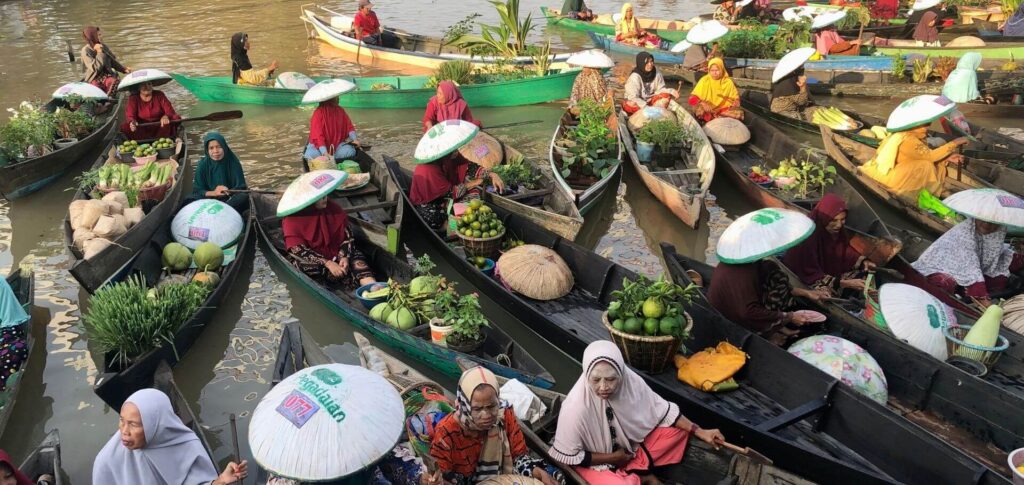
East Asian Missionary Movement
The Great Commission is given to all Christians around the world. The concept of Asian missions started in the 1970s through the Lausanne Movement.
Asian Missions before the Lausanne Congress
Before the Lausanne Movement in the 1970s, Asian churches sent cross-cultural missionaries to other countries. In 1912, the Korean Presbyterian Church (KPC) General Assembly commissioned three Korean missionaries (Park Tae-ho, Sa Byong-soon, and Lee Day-young) to Shandong Province, China. Eight more missionaries went to China and served for 21 years (1937–1957) in 1921. In 1949, KPC Women’s Missions Committee sent Chung Syung-won to Taiwan; in 1956, KPC sent one Korean couple (Choi Chan-yong and Kim Soon-il) to Thailand. The Christian students at Ewha Christian Women’s University in Seoul sent two graduates to Pakistan in 1964. In 1968, Rev David Cho founded the Korean International Missions (KIM) to train Korean missionaries.
Arise of Asian Congresses of Evangelism
Thousands of Asian church leaders attended the Lausanne International Evangelism and Mission conferences and the Asia Pacific Congress of Evangelism in Singapore in November 1968. The Asian church leaders started their national evangelism and mission conferences in their countries. The Japanese leaders held the Japan Congress of Evangelism in Tokyo (1974), Kyoto (1982), Shiobara (1991), Okinawa (2000), and Kobe (2016). For the International Tokyo Olympics 2020, the Japanese church set a goal for the 2020 Vision for Japan in 2015 to increase the number of churches from 8,900 (as of the year 2000) to 10,000; the number of Japanese missionaries from 510 to 1,000; and the number of Japanese Christians from 543,816 to one million. Singapore held the Anglican Congress of World Evangelization (1989), the 4th Asian Baptist Congress (1992), and the Joshua Project 2000 in the South East Asia Conference (2000). The Thai Church held Vision 2000 Thailand (1996) with a goal of 600,000 Christians (and 6,000 churches) from 260,000 (as of the 1980s). Other Asian nations conducted similar evangelism congresses.
Growing Asian Missionaries
Three Asian countries are especially noteworthy for sending many missionaries. First, the Korean church had sent 1,645 Korean missionaries to 87 nations by 1989; by 2021, however, the numbers spiked to 22,210 missionaries in 170 countries. The total estimated number of Korean missionaries, including those excluded from official statistics, is over 30,000. The Korean GNP per capita income increased drastically from USD 5,883 in 1990 to USD 34,189 in 2021. The rapid economic growth in South Korea in the 1990s helped the Korean church send more missionaries. The Korean World Missions Conference in 2006 launched the One Million Tent-Making Professional Missionaries Movement in 2020, mobilizing the whole Korean church for world missions.
The house church leaders in China conducted three Mission China 2030 Consultations in Hong Kong (2015); Jeju Island, Korea (2016); and Chiangmai, Thailand (2017); planning to send 20,000 Chinese missionaries by 2030. Chinese Christians wanted to emulate the 20,000 Western missionaries in China. There are now only 1,000 missionaries sent from mainland China.8
Operation World (2001) reported 44,000 Indian missionaries from 440 mission agencies, 60% working cross-culturally. The majority of Indian missionaries were commissioned from South India to the vast majority of the Hindu and Muslim population of North India, who had different languages and cultures. Over 440 Indian missionaries ministered in foreign countries.
The Asian economy rapidly developed in the twenty-first century; the Asian churches began to send many cross-cultural missionaries globally.
New East Asian Mission Strategies
Changing Asia demands a new mission strategy to achieve the Great Commission. The main interest in missiological and theological discussions from 1960 to the 1990s in the Asian church was ‘contextualization’. It promoted the independence of the national church from the colonial mentality of depending on foreign mission organizations and personnel, emphasizing the positive values of some of the traditional cultures.
Today, the new mission focus is ‘globalization’ because the world has shrunk to a global village with the massive development in communication and transportation. Each country has unique characteristics, and each national church must develop new mission strategies. Asian churches have applied several new mission strategies.
Cross-cultural missionaries within the country
Most Asian nations have many ethnic groups with different languages and cultures. Over 60 percent of 30,000 Indian missionaries work within India. Operation World reported that Myanmar had 3,160 cross-cultural missionaries with 40 mission agencies, but only 60 of those missionaries worked in other nations. Sri Lanka had 717 missionaries from 18 mission agencies, but only five of those missionaries worked in five other nations.9
Diaspora Missions
Millions of Asians immigrated to other nations in Asia, North America, and Europe, and Asian Christian immigrants established their overseas mission agencies to send cross-cultural missionaries. The Korean World Mission Council (KWMC) was founded in 1988 to mobilize Korean Americans at the Billy Graham Center of Wheaton College in Illinois, and Azuza Pacific University in California. Several Chinese overseas mission agencies were established in North America: Great Commission Center International (Thomas Wang) in Sunnyville, California; Ambassadors for Christ (David Chow), Paradise, Pennsylvania; Global Enrichment Mission Center (Susan Choo) in Irvine, California. Others were established in the United Kingdom, such as the Chinese Overseas Christian Missions (Mary Wong) in London.
Professional Missionaries
Most Asian nations, particularly ones in South East Asia, are not economically strong enough to send a large number of missionaries. The 2021 GNP per capita income in several Asian countries were as follows: Malaysia (USD 11,109), Thailand (USD 7,066), Indonesia (USD 4,332), Philippines (USD 3,460), and India (USD 2,256). Therefore, strategies to send ‘tentmaking’ professional missionaries who can support themselves on the mission field through their professions need to be developed.
Reach Foreign Residents in Each Nation
International students, businesspeople, foreign diplomatic residents, and many other foreign visitors reside in each nation. In essence, the mission fields came to our doorsteps. The domestic church must therefore find ways to reach these foreigners with the gospel. For example, many Korean churches started foreign language services for workers and students from Myanmar, Nepal, Indonesia, and many others.

Challenges in East Asia
Materialism and Secularism
A growing number of Christian young people either leave the church or become inactive in church when they finish their university education. Secular education and materialism have deeply affected their Christian faith, causing less interest in Christian missions.
Religious Persecution
Persecution against Christianity has sharply increased in the twenty-first century from three main anti-Christian forces: Islam, Communism, and Hinduism. Christians in Islamic nations (Pakistan, Malaysia, and Indonesia) experience various degrees of persecution. Pakistan’s blasphemy laws deem blasphemy against Islam punishable even by death. In Malaysia, strict Islamic laws forbid one to touch others’ bodies or certain parts of their bodies. Indonesia’s restrictions against the church grow daily, and so does China’s increasing persecution against house churches. In the Northern Hindu states in India, radical Hindus have attacked Christians in their region.
Necessity of Spiritual Renewal
The task of the Great Commission involves spiritual warfare. The Asian church, particularly its leadership, needs to renew its spiritual life. The Fourth Lausanne Congress can significantly stimulate the Asian church to actively engage the Great Commission mandate of Jesus Christ and develop a specific new mission strategy for its own use.
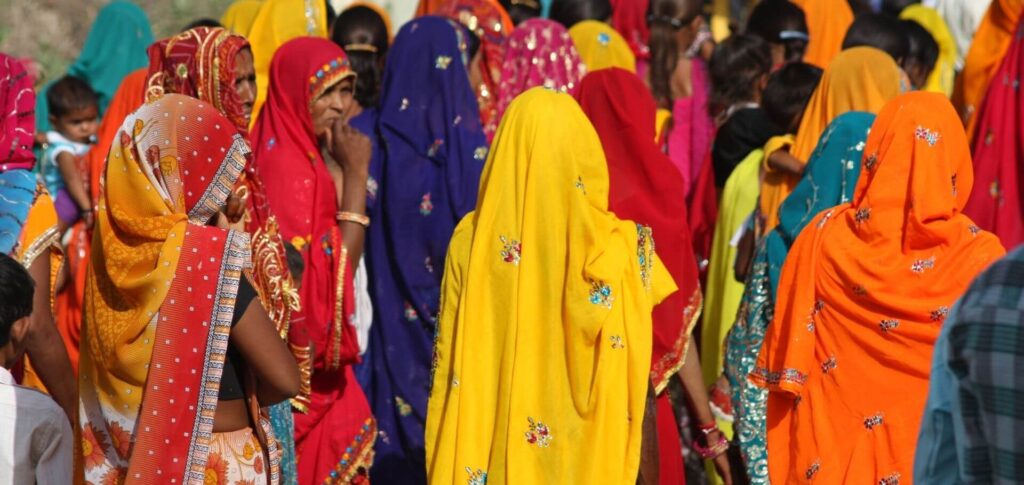
The Rise and Irony of India
By 2050, India’s GDP is estimated to grow up to USD 30 trillion. However, the statistical figures of the economic growth of India are an irony. Its growth is a ‘bubble’, as the ground reality is less than prosperous.
Persecution against Christianity has sharply increased in the twenty-first century from three main anti-Christian forces: Islam, Communism, and Hinduism.
According to the United Nations’ World Population Prospects, India’s population is expected to rise to 1.66 billion by 2050. That means all of them have to have food, shelter, and clothing, as well as to live with dignity, freedom, and fundamental human rights. According to studies conducted in 2022 by World Economic Forum and World Bank,adolescents and young adults (ages 15–29) comprise 27.2 percent of the total Indian population of 1.4 billion. By 2050, every fifth Indian will be an elderly person that will need to receive care. Though statistics would show India as a fast-growing economy, over 90 percent of the wealth is owned by about 10 percent of the population. The rich are becoming richer day by day, and the poor poorer.
In the 2022 Global Hunger Index, India ranked 107th out of the 121 countries. The largest number of people experiencing poverty in the world (228.9 million) lived in India in 2020, said the 2022 Global Multidimensional Poverty Index (MPI) released by the United Nations Development Programme (UNDP) and the Oxford Poverty and Human Development Initiative (OPHI). There are 1.77 million homeless people in India, according to the 2011 census consisting of single men, women, mothers, the elderly, and the disabled.
Regarding the quality of healthcare, India has just five beds for 10,000 Indians. The Human Development Report 2020 showed that out of 167 countries, India would rank 155th on hospital bed availability. About 1.34 doctors were responsible for the care of 1,000 Indian citizens as of 2017. The infant mortality rate in India is the second highest in the world, as the World Health Organization (WHO) has recently reported in 2023. Regarding the quality of life, India is among the least happy nations, ranking 126 out of 150 countries. According to National Crime Record Bureau (NCRB), 164,000 people committed suicide in 2021 alone. The WHO estimates that India has the 41st highest suicide rate globally, as of 2019.
National literacy rate was estimated at 74 percent in 2011. However, the real functional literacy rate would be only 30 to 40 percent. India is one of the most illiterate and poorest countries in the world. There are an estimated 26.8 million disabled persons.
India has 766 districts and 640,000 villages. However, urbanization is growing at an alarming rate. These urban regions lack infrastructure. Urbanization also brings challenges to evangelism. Drugs, alcoholism, domestic violence, and human trafficking are major issues to be addressed. With the skyrocketing inflation and unbelievable disparity between the rich and poor, India is becoming a severely famished land. A large population may die of hunger due to the increasing unemployment rate. A number of financial institutions, banks, and business corporations are going bankrupt, and the investors suffer heavy losses. Foreign currency reserves are dwindling, and production is decreasing.
Foreign investors are reluctant to invest in India because of the nation’s financial instability and violence toward certain ethnicities. Lies and fear prevail. The rich minority exploits and oppresses the poor majority, controlling the government through money and media to suit their right-wing agenda. Christians are among the most hounded communities in India. These socioeconomic and political disparities are detrimental to the implementation of the Great Commission.

Christian Missions In India
India, the most populous nation in the world, is on the move. God who has put the name of India in the Bible (Esther 1:1, 8:9) is watching over her. The 1.41 billion souls living in this Asian subcontinent are precious to him.
To understand the rise of India and the impact of the Great Commission in the nation, three questions need to be discussed: What are the challenges that missionaries and believers face in India? Do we see any opportunities for evangelism despite, and even arising from, those challenges? What are some strategic ways to move forward to further the impact of the Great Commission in the nation?
Challenges
In order to follow the Great Commission in this land full of hardships, believers must be equipped to face challenges with courage and conviction, expecting and enduring them (2 Tim 3).
A reengineering of our mission is the greatest need. First, we must identify the challenges of evangelism in India today, both external and internal.
The external challenges include the following:
- increasing persecution and secularization;
- religious fundamentalism and nationalism;
- caste rivalries and social stigma;
- poverty and illiteracy;
- population explosion;
- migration and demographic changes;
- globalization and urbanization;
- political corruption and lack of transparency;
- and cultural conflicts and pluralism.
The internal challenges include the following:
- lack of vision for the Great Commission;
- leadership failure in inspiring and challenging the believers to win souls;
- complacency or shame in sharing the gospel;
- lack of systematic planning to reach the unreached;
- internal quarrels and disunity among congregation members;
- lack of accountability and stewardship;
- lack of empowerment of women, children, and youth for gospel penetration;
- shortage of workers, sowers, and reapers;
- limited financial resources;
- lack of tears for the lost;
- lack of proper understanding of the Word and the world;
- lack of training for evangelism and discipleship;
- and lack of evangelistic tools, such as sufficient copies of the Bible.
Persecution
Persecution of Christians in India, which began in the late 1990s, has now turned even more vicious with the right wing religious and political ideology of making India a Hindu religious nation.
Historically, Christianity in India is birthed in blood, with the martyrdom of its first messenger, St Thomas, two thousand years ago. Even today persecution is the biggest threat in India. Currently, the deadly cocktail of mixing religion and politics with an ideology of hatred is pushing the nation to anarchy and communal disharmony and bloodshed. The anti-conversion bill enacted by the few state governments has strengthened the anti-Christian communal terrorists to further torture Christians. In Gujarat’s Dang District, hundreds of churches were burnt, and believers were brutally attacked in 1998. This culminated in the murder of Australian missionary Graham Staines (54 years) and his two sons, Philip (11 years) and Timothy (6 years), in Manoharpur, Orissa, on 23 January 1999.10
Again, the world was stunned by the brutality of the anti-Christian violence that engulfed the jungles of Kandhamal, Orissa, from August 2008. Churches were burnt, Christians hounded out, and their houses plundered and torched. Journalist Anto Akkara, who wrote four books on the Kandhamal carnage and produced three documentary films, revealed: ‘Over 300 churches and nearly 6,000 Christian houses were reduced to ashes or damaged, rendering more than 56,000 people refugees in the jungle region . . . . Yet Christian faith stood out shining amid the ashes . . . . While more than 100 Christians became martyrs for their faith, hundreds of others were lucky to survive after they were brutally tortured for refusing to renounce their faith’.11
Since 2014, persecution of Christians in India has become almost a daily affair. Arson, looting, torturing, and killing of Christians, in vicious organized hate campaigns is turning into a pogrom of religious and ethnic cleansing of Christians in India by the fascist right-wing ideologists. From December 2022 to April 2023, there was a series of attacks in about 33 villages of Bastar, Chattisgargh, displacing about one thousand Christians from their own villages. Those displaced were threatened to denounce their Christian faith and convert to the ‘majority’s religion’. In refusing, they would have to leave their village or face dire consequences, even death.
Christians in India are attacked in three ways: physically, mentally, and financially. Physically tortured, they are not allowed to work in their own farms or in those owned by others. Shopkeepers are threatened not to sell groceries or give government ration provisions to Christians. They are not even allowed to draw water from the public well.
In the North Indian state of Uttar Pradesh, hundreds of pastors and believers have been arrested on false charges and have been languishing in prisons for several months. In Manipur of North East India, hundreds of Christian houses, churches, and Bible schools were destroyed from 4 May 2023 onwards. There is no correct count for the numbers of believers killed or displaced. Thousands of the Manipuri Christians have become refugees in their own country. The violence and bloodshed in the ethnic cleansing of the minorities in India have made international stakeholders reluctant to invest in India, primarily due to the erosion of democratic and secular values of freedom and justice.
Opportunities: The Blessed Minority
The Christians are a minority in India, but their contribution to the building of the nation is amazing. The Great Commission servants continue to labour in a variety of ways to bless and make India a great nation. Linguistically, India is a ‘Babel of Tongues’ with 1,652 mother tongues, most of them without modern scripts. Over the years, Bible translators have invested their lives in creating modern scripts for over 200 indigenous Indian languages. Currently modernization of 180 more Indian languages is underway. Christian missionaries had a powerful impact on India’s revolutionary development in various areas: literature, literacy, linguistics, printing and publishing, journalism, agriculture and horticulture, the construction of education facilities from kindergarten to universities, the liberation of slaves and untouchables. Christian missionaries worked to empower Indian children and women in the masculine society and introduced modern health education and healthcare. There is hardly any area where people of faith have not invested their lives to make India a modern nation. For instance, William Carey went to India in 1793 and lived there for 42 years, during which time he developed 41 Indian languages, and gave to India 23 new profitable modern items.12
Regarding its size, the Christian community in India today is minuscule. No exact figure is available. Latest official census identifies about 2.7 percent Christians out of 1.41 billion citizens. Those who oppose the gospel allege that Christians could number over 17 percent, and this number is growing. They use this overestimation to justify their desire for religious and ethnic cleansing of Christians.
The Great Commission is not an option but a command. We are saved to save others. As Paul told Timothy: ‘Do the work of an Evangelist . . . . Preach the Word. Be prepared whether the time is favourable or not’. Therefore, a slogan to execute the Great Commission effectively could be ‘The Cross: Live and Share’. This is what India needs: never dilute the Cross, and never dilute the gospel message, as Mahatma Gandhi, the ‘Father of India’ once told missionary E. Stanley Jones. When Jones asked Gandhi, ‘What would you, as one of the Hindu leaders of India, tell me, a Christian, to do to make Christ naturalized in India?’ Jones writes, ‘Gandhiji responded with great clarity: “First, I would suggest that all of you Christians, missionaries and all, must begin to live more like Jesus Christ. Second, practice your religion without adulterating it or toning it down. Third, emphasize love and make it your working force, for love is central to Christianity. Fourth, study non-Christian religions more sympathetically to find the good that is within them, in order to have a more sympathetic approach to the people’”.13
Regarding its size, the Christian community in India today is minuscule. No exact figure is available. Latest official census identifies about 2.7 percent Christians out of 1.41 billion citizens.
For the effective implementation of the Great Commission, the congregation leaders have to take the lead. Passion for the perishing is the first requirement for being a leader. Systematic teaching and practice of evangelism should be launched in every church. Every leader should pattern Jesus the Leader to be an effective soul winner. Jesus Christ excelled in compassion, courage, confidence, command, communication, care, conviction, clarity, and charisma.
In addition to individual intercession, massive national prayer networks will strengthen the body of Christ. The first step of the Great Commission is prayer. Also, the Bible, the Word of God, needs to be the centre of all our beliefs and behaviour. We need to seek, submit, store, spread, and be sanctified by God’s Word. Every citizen of India has the right to receive a copy of the Bible. This is the greatest challenge of the Great Commission.
To ‘go’ is the strategic Great Commission command. It is the mandate of every disciple of Christ. ‘Good News to All: Each One Reach One’ could be another slogan for fulfilling the Great Commission. Let us commit ourselves to share Christ systematically in our neighbourhood, workplace, and market square. Invite friends to our homes and talk over tea. Personal holiness and harmony with others have to be maintained. Bible expositors and evangelistic preachers should be trained by every congregation and Bible college. Reaching the huge global Indian diaspora with the good news of the gospel should become another revolutionary move.
In conclusion of this analysis, what Billy Graham said on the future of the Great Commission is apt: ‘Technology alone is insufficient. Strategies alone are not enough. More than anything else, God requires men and women who will give themselves without reserve as living sacrifices in response to the challenge Jesus gave when he said: ‘As my Father had sent me, even so send I you’ (John 20:21).14
Christians need to remember that there is no opportunity without opposition, no victory without vigilance, no winning without warfare. Our divine call is to live, love, and labour for the Lord until he comes. Sow the seed of the gospel with tears, and reap with cheers.
Endnotes
- Jeremy Grant, “Asia’s Millionaires Outgrow Those in N America,” Financial Times, September 19, 2012, https://www.ft.com/content/a1bdebb2-0212-11e2- 8aaa-00144feabdc0.
- Yuji Kuronuma, “Asia Has over 950 Billionaires, Outnumbering All Other Regions,” Nikkei Asia, October 4, 2022, https://asia.nikkei.com/Spotlight/Datawatch/Asia-has-over-950-billionaires-outnumbering-all-other-regions.
- “The Centi-Millionaire Report,” Henley & Partners, October 18, 2022, https://www.henleyglobal.com/newsroom/press-releases/centi-millionaire-2022.
- “Asia-Pacific Migration Data Report 2021,” International Organization of Migration (IOM), https://publications.iom.int/system/files/pdf/2021-AP-Migration-Data-Report_1.pdf.
- Joon-gon Kim, “Six New Churches Every Day: Korean Church Growth,” Asian Perspective 17 (Taiwan: ATA, 1978).
- Fenggang Yang, “Will Chinese House Churches Survive the Latest Government Crackdown?” Christianity Today December 31, 2019. https://www.christianitytoday.com/ct/2019/december-web-only/chinese-house-churches-survive-government-crackdown.html.
- Bong Rin Ro, Asian Church History (Publication Forthcoming, 2023), 12–14, 16, 20–21, 28.
- Ibid. 46–50.
- “Missionaries from the National Church” published by Operation World in 2001 gives a much higher number of Asian missionaries than other missions reports.
- Vishal Mangalwadi, et al., Burnt Alive: Staines and the God They Loved (Mumbai: GLS Publishing, 1999).
- Anto Akkara, Early Christians of 21st Century: Stories of Incredible Christian Witness from Kandhamal Jungles (Thrissur, India: Veritas, 2013), 13.
- Ruth Mangalwadi and Vishal Mangalwadi, The Legacy of William Carey: A Model for the Transformation of a Culture (Singapore: YWAM, 2006), 45.
- Babu K. Verghese and Pandit Dharm, My Encounter with Truth (Mumbai: Media Concerns, 2008), 112.
- Billy Graham, A Biblical Standard for Evangelists (Grason, 1984), 135.





